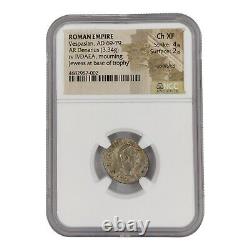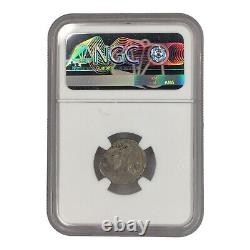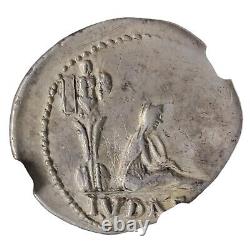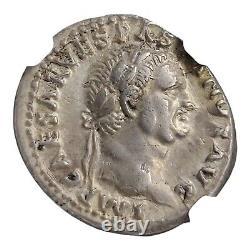Vespasian Judaea Capta Jewess AR Denarius Silver Coin 69-79 AD NGC CH XF LL





There are several light scratches to the holder. Flashy in hand, with beautiful eye appeal. Scratched in antiquity, subsequently toned over and don't detract significantly from the visual appeal of the coin.
From the Jewish Virtual Library. Soon after the Temple at Jerusalem was razed by the victorious troops led by Titus in 70 CE, his father - Emperor Vespasian - launched an extensive issue of coins commemorating the hard fought Roman victory over the tiny Jewish nation. The Judaea Capta series lasted for 25 years under Vespasian and his two sons who succeeded him as Emperor - Titus and Domitian. These commemoratives were issued in bronze, silver and gold by mints in Rome, the Roman Empire, and Judaea. The basic design elements of the coins struck in Rome or in its Empire are a palm tree and a seated figure of a female (allegorical representative of Judaea) in an attitude of mourning. The depiction on these coins may reflect the prophesy of Isaiah c. 700 BCE: For Jerusalem is ruined, and Judah is fallen...Thy men shall fall by the sword and thy mighty in the war. And her gates shall lament and mourn, and she being desolate shall sit upon the ground (Isaiah 3:8, 25-26). Other Judaea Capta varieties include the standing figure of the victorious emperor, a male captive, the goddess Victory, and Roman symbols of war. The most common Judaea Capta coin is the silver denarius issued by Vespasian, picturing Judaea weeping beneath a Roman trophy, and the inscription IVDAEA. Other denarii of Vespasian show Judaea seated next to a palm tree, Judaea standing next to a palm tree with her hands bound, inscribed IVDAEA DEVICTA, a tiny Jewish captive next to Victory, Judaea seated beneath a palm tree with a Roman soldier standing alongside, etc.
Some of these designs also appeared on gold coin.

